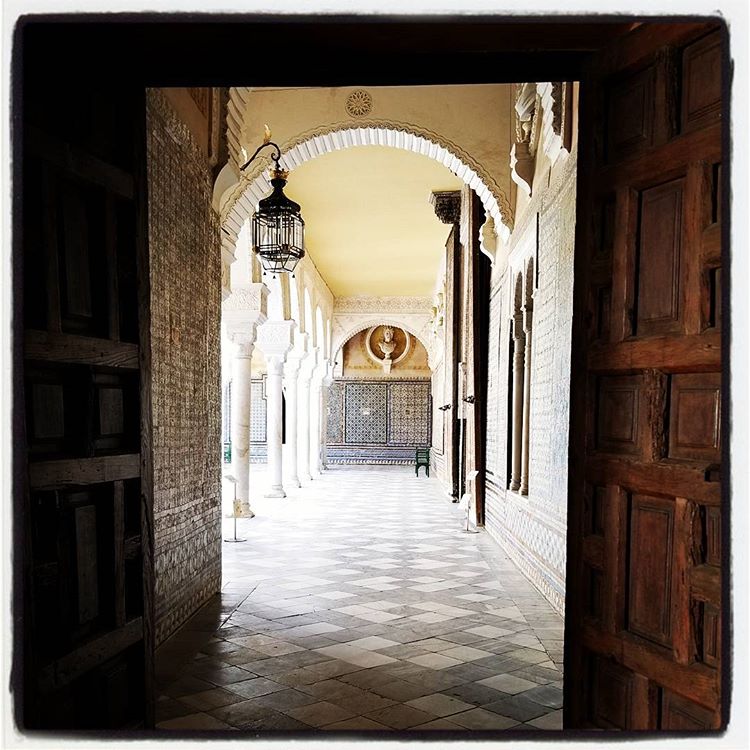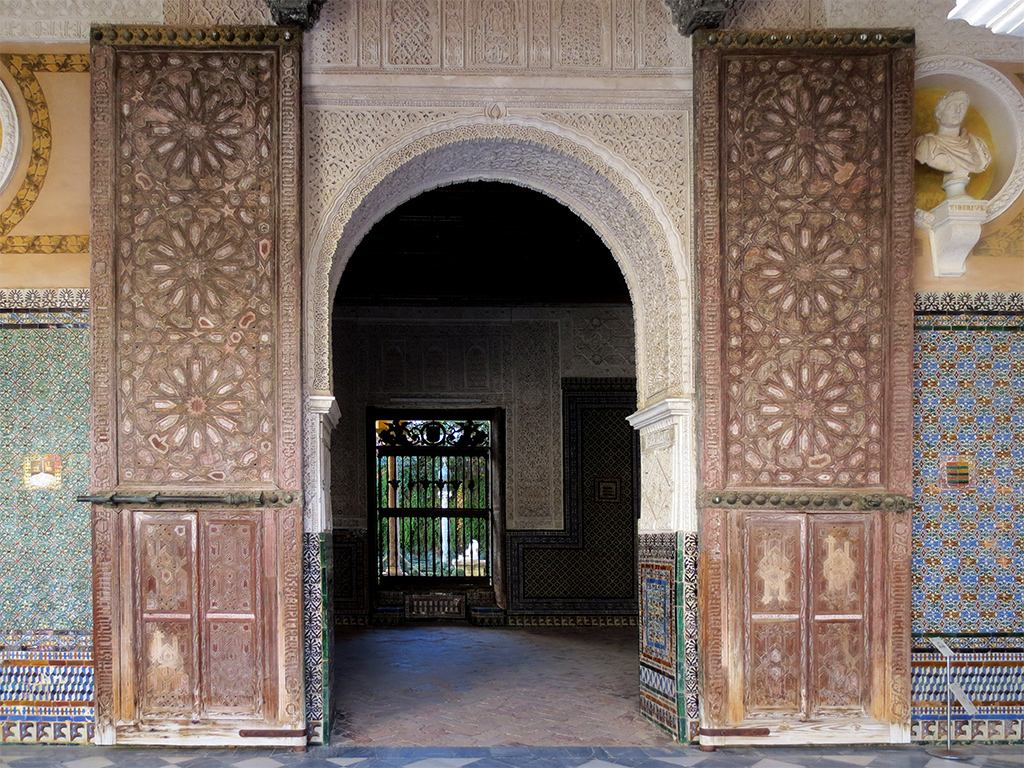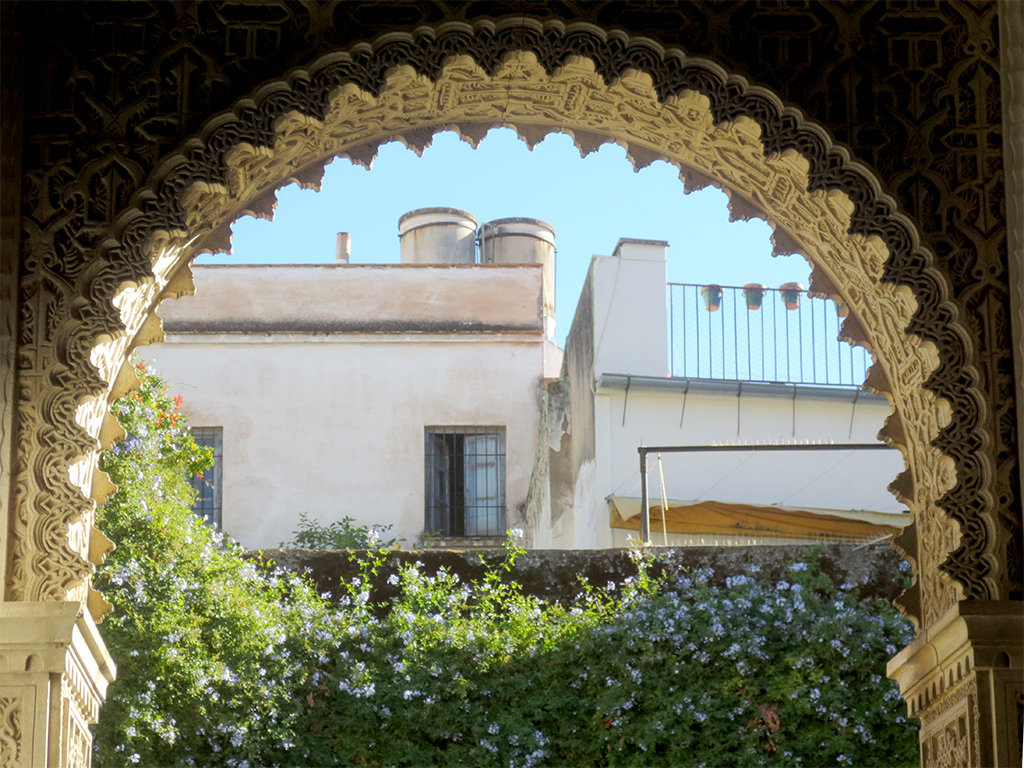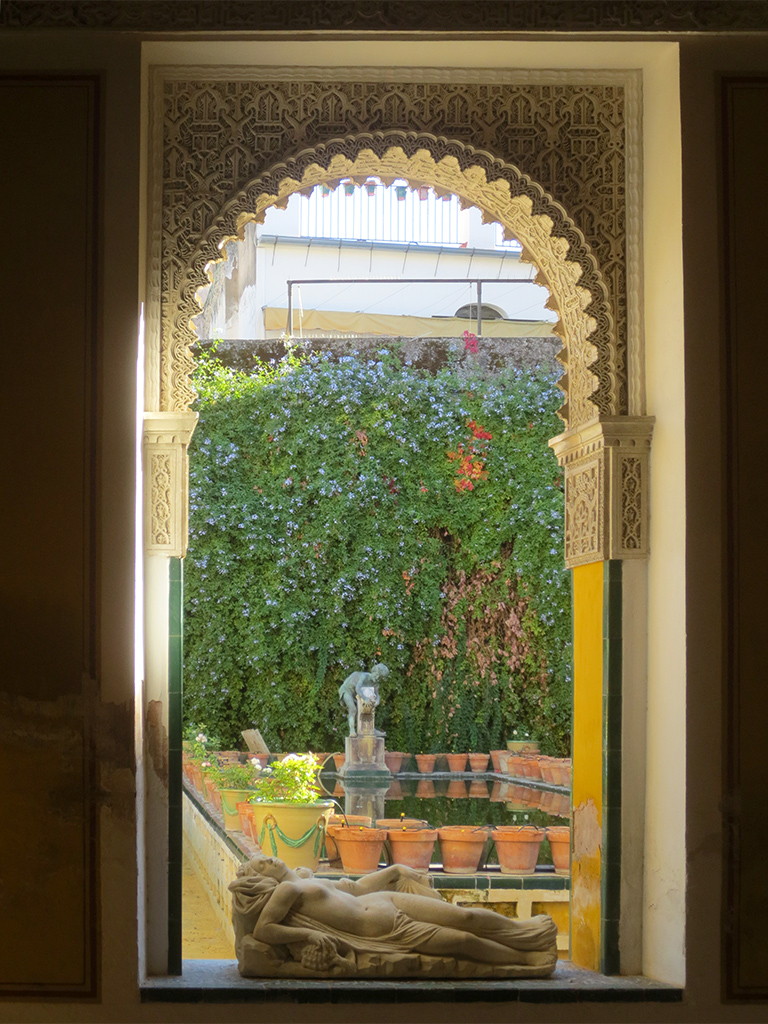Seville is a city with no shortage of luxurious Andalusian palaces to wander through. This week we visited Casa de Pilatos (“Pilate’s House”) and filled our cameras.
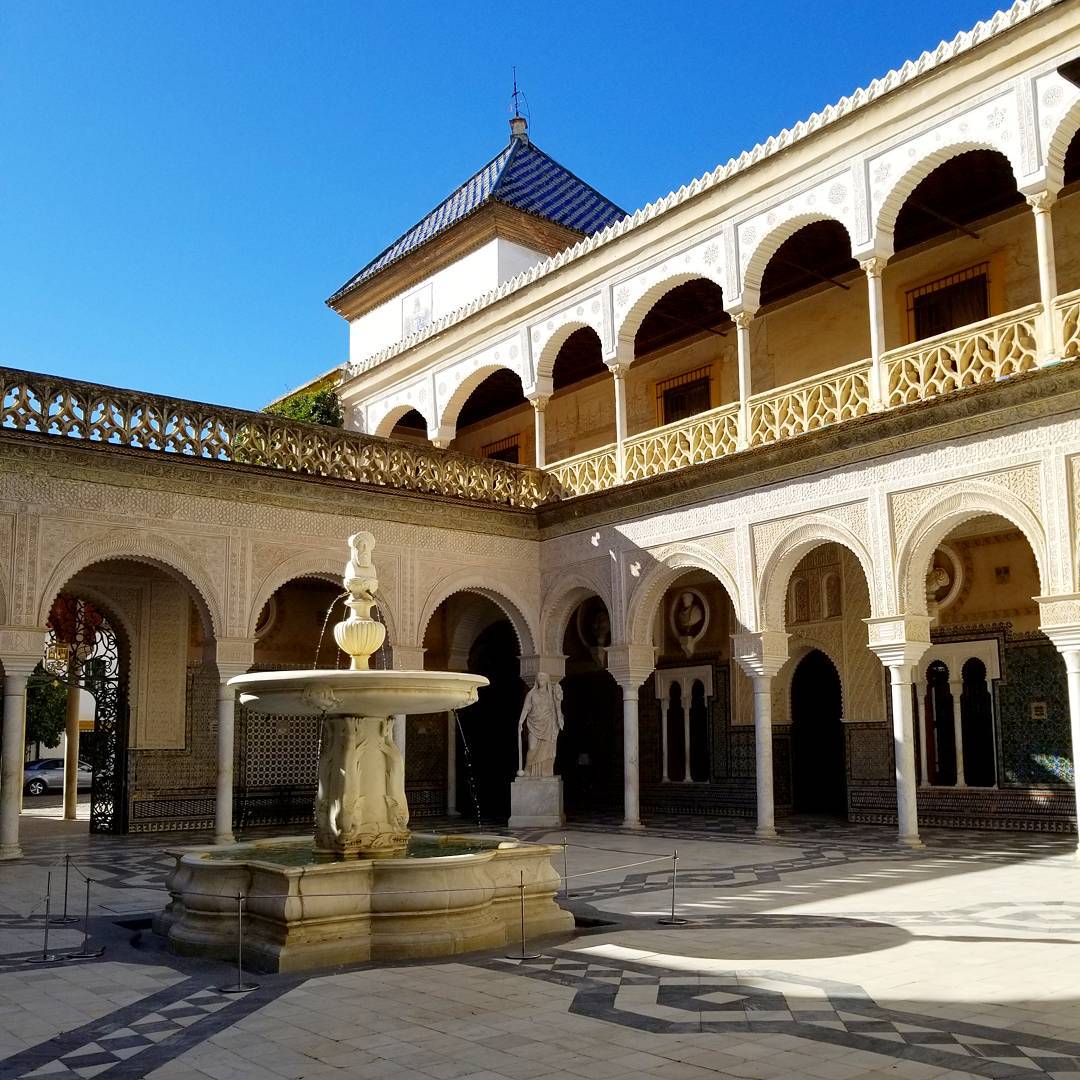
The palace was initially built in the 1520’s by a member of Spanish nobility who returned from a trip to the Holy Land and was inspired to construct a home at the starting point of a religious pilgrimage route.
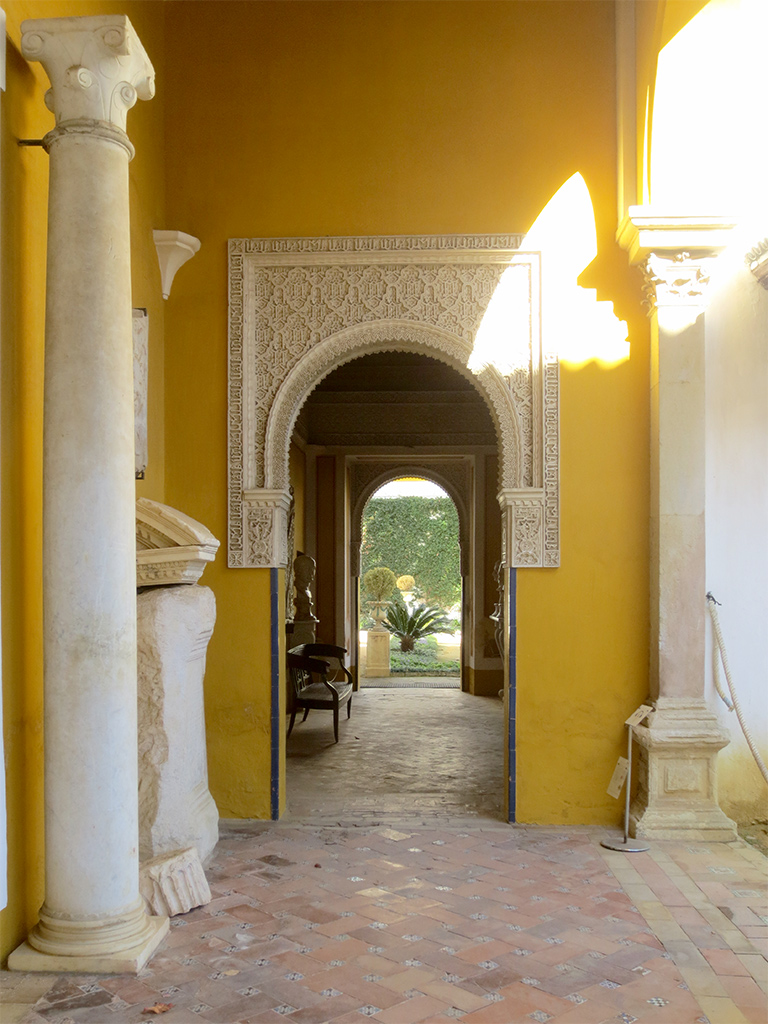
The complex was expanded by future generations of the family, and is still the permanent residence of the Dukes of Medinaceli line. Today the house incorporates many different types of architecture, including Renaissance and Mudejar.
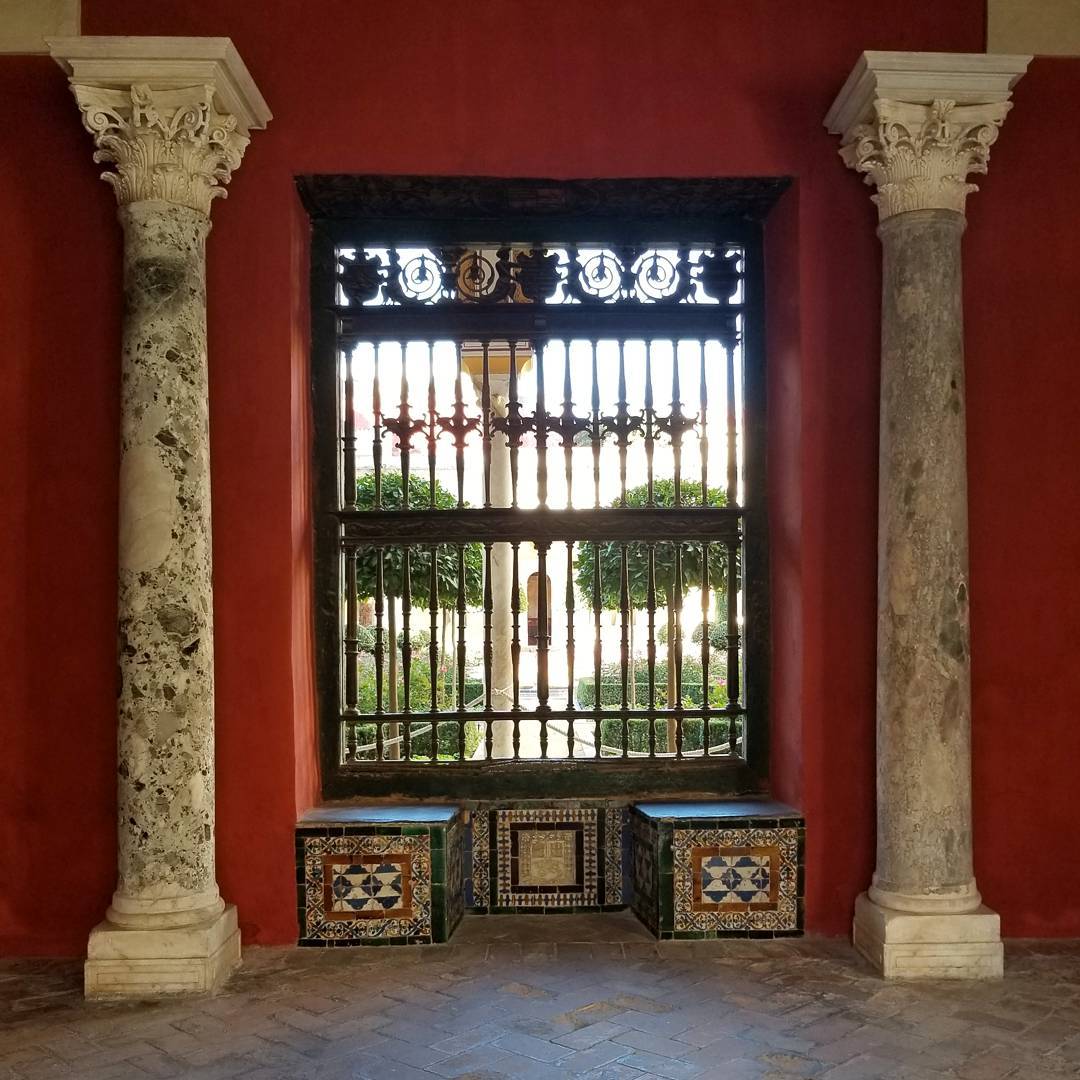
History aside, it’s easy to wander and admire the green gardens (even in late November) along with the many arches and detailed tiles and carvings on the doors and ceilings.
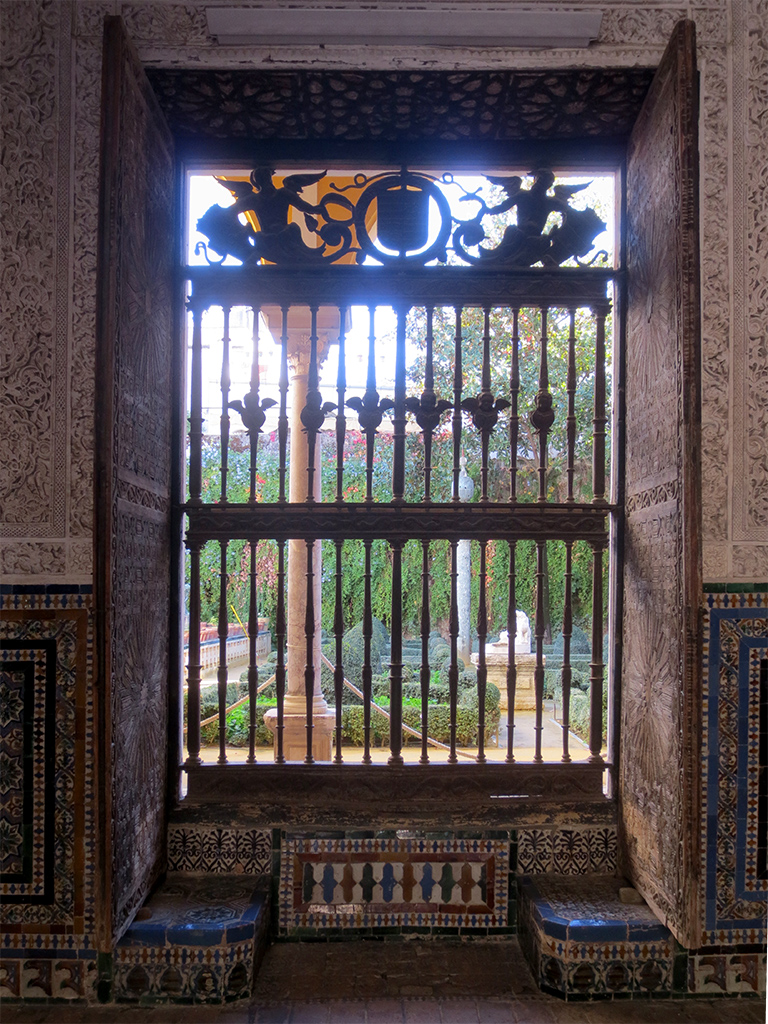
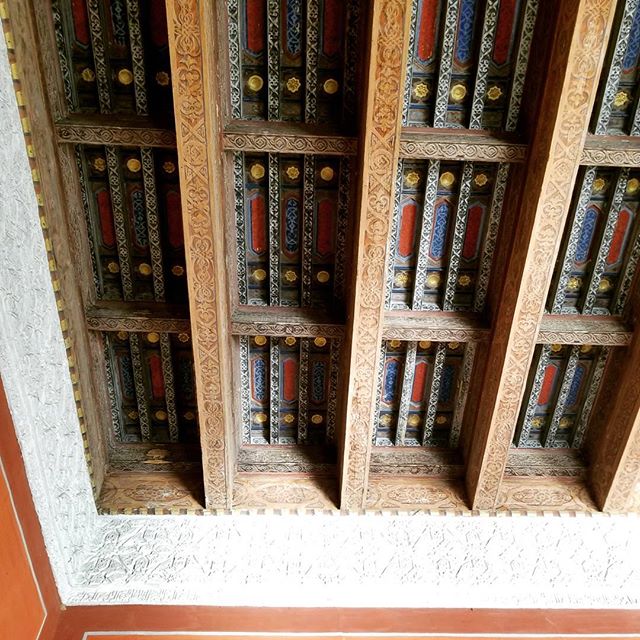
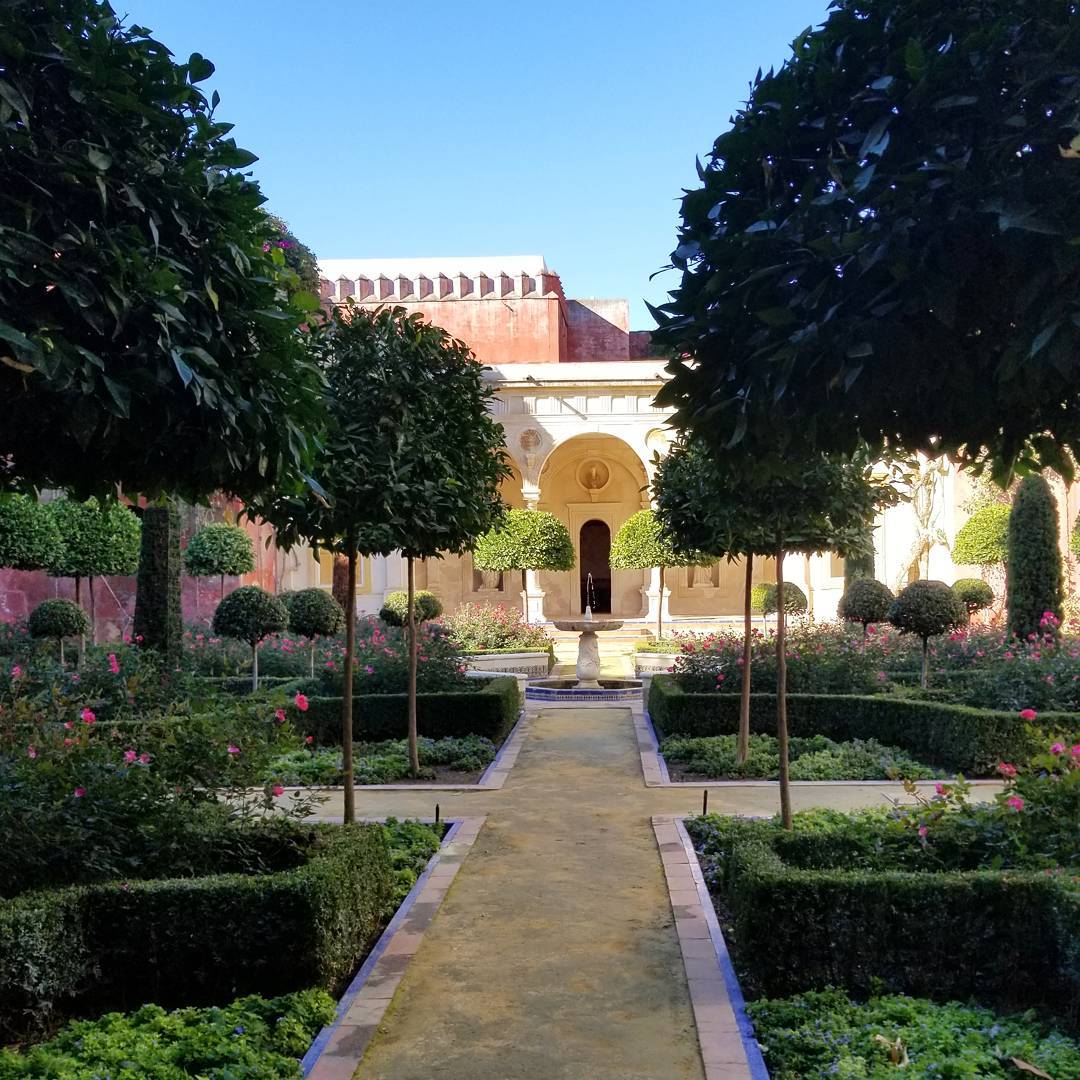
The Patio Principal is lined with twenty-four busts of Spanish kings, Roman emperors and other relevant characters, many collected from the nearby ruins of the Roman town of Italica.
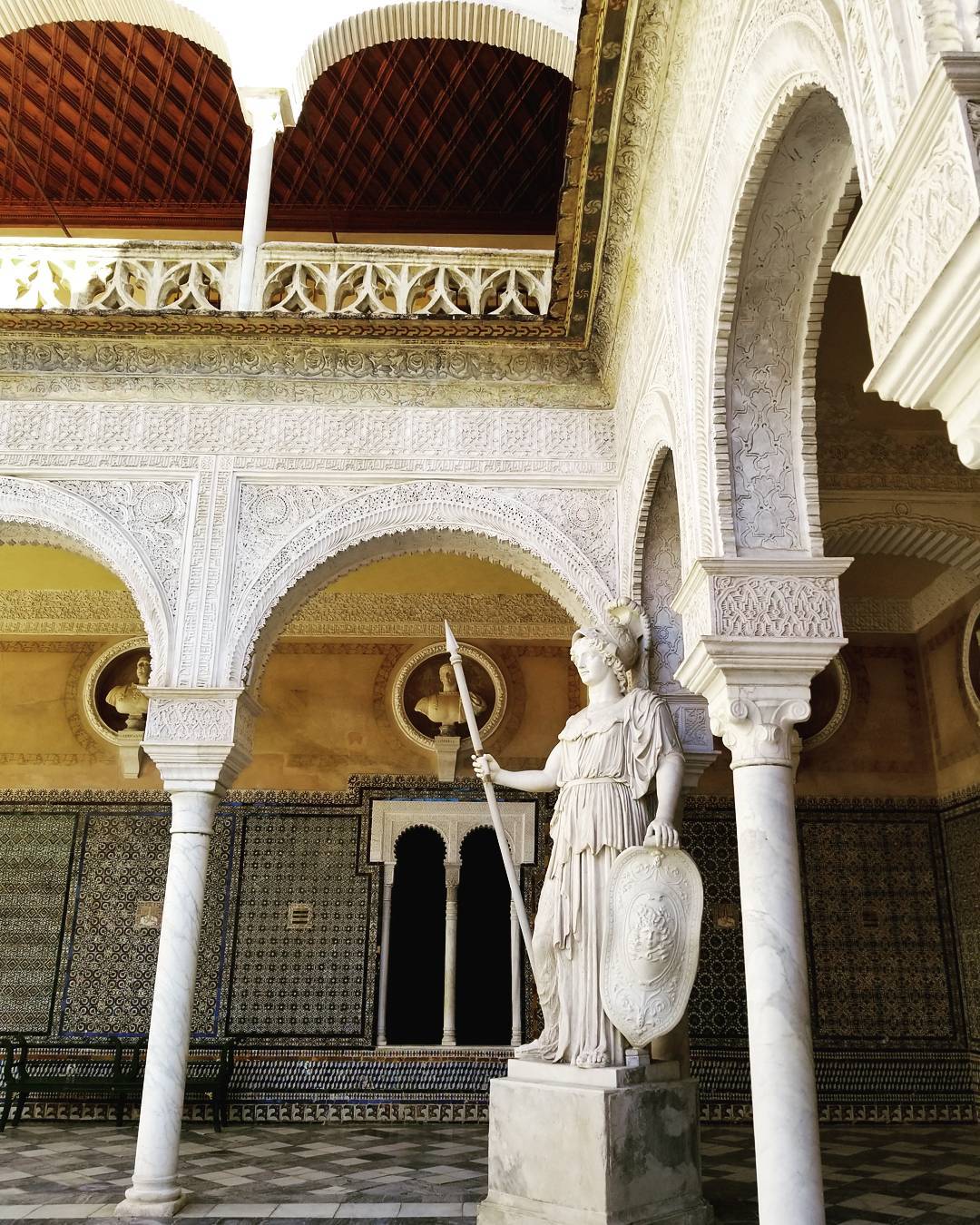
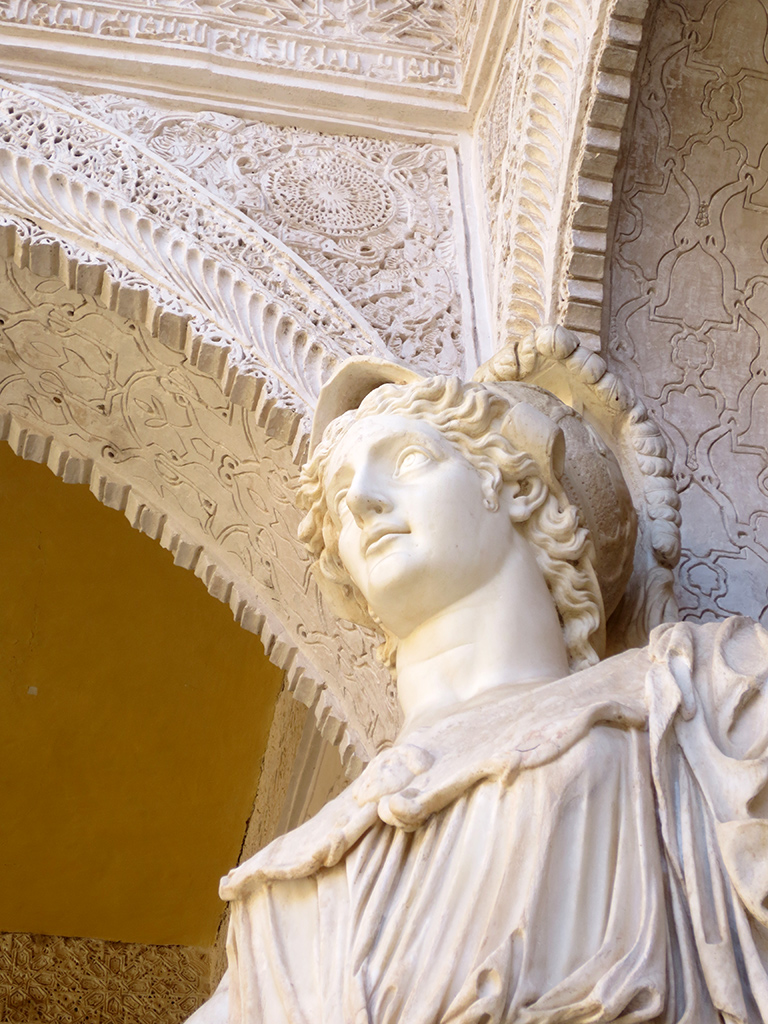
We paid €8 to wander freely on the lower floors and courtyards with an Audio Guide device, which provided more than enough details about what we were seeing. Guided tours of the upstairs were also available for another €2 but we passed on that option.
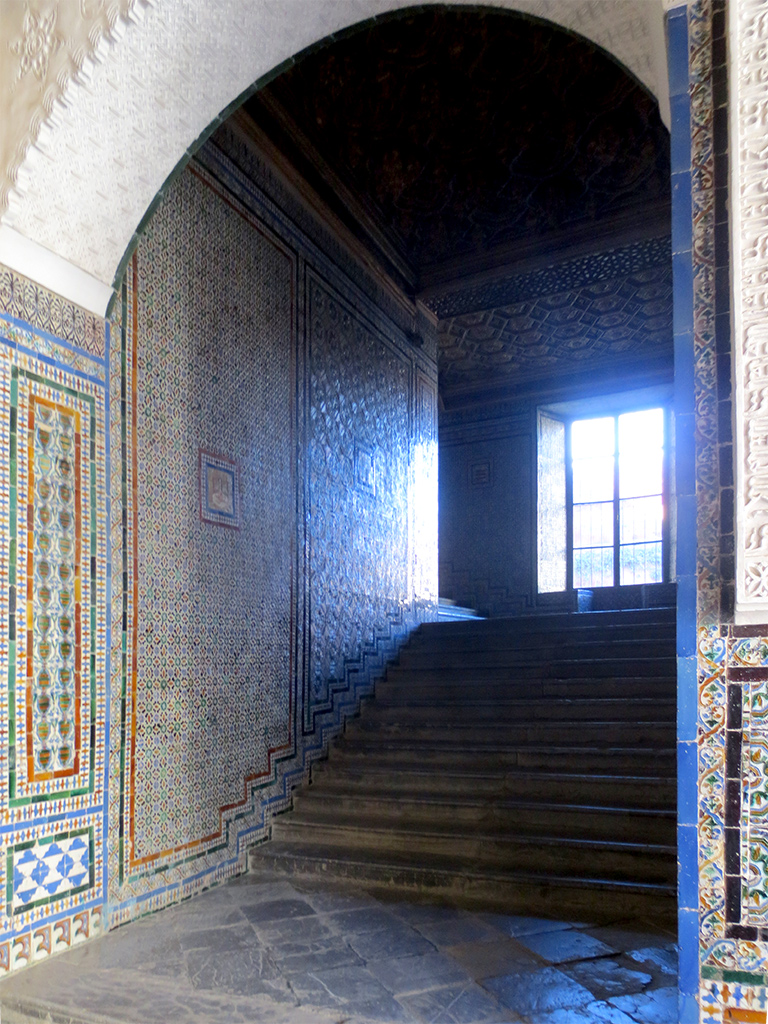
Decorating the various rooms and courtyards were countless sculptures and artifacts, both Christian and Ancient Roman in origin.
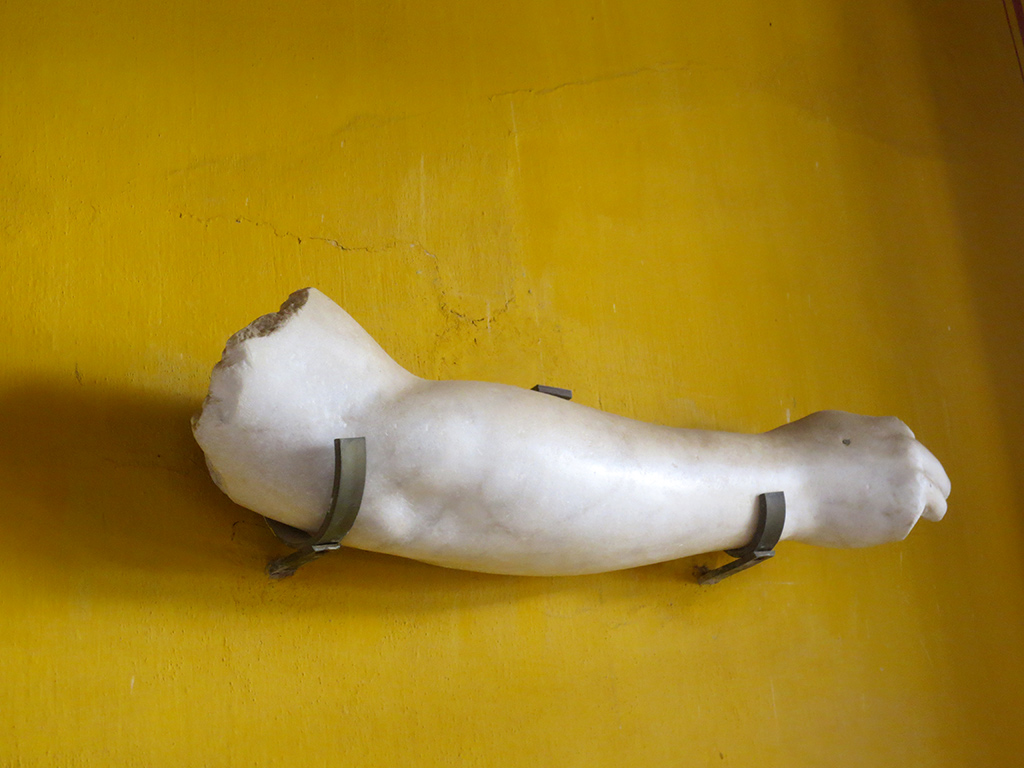
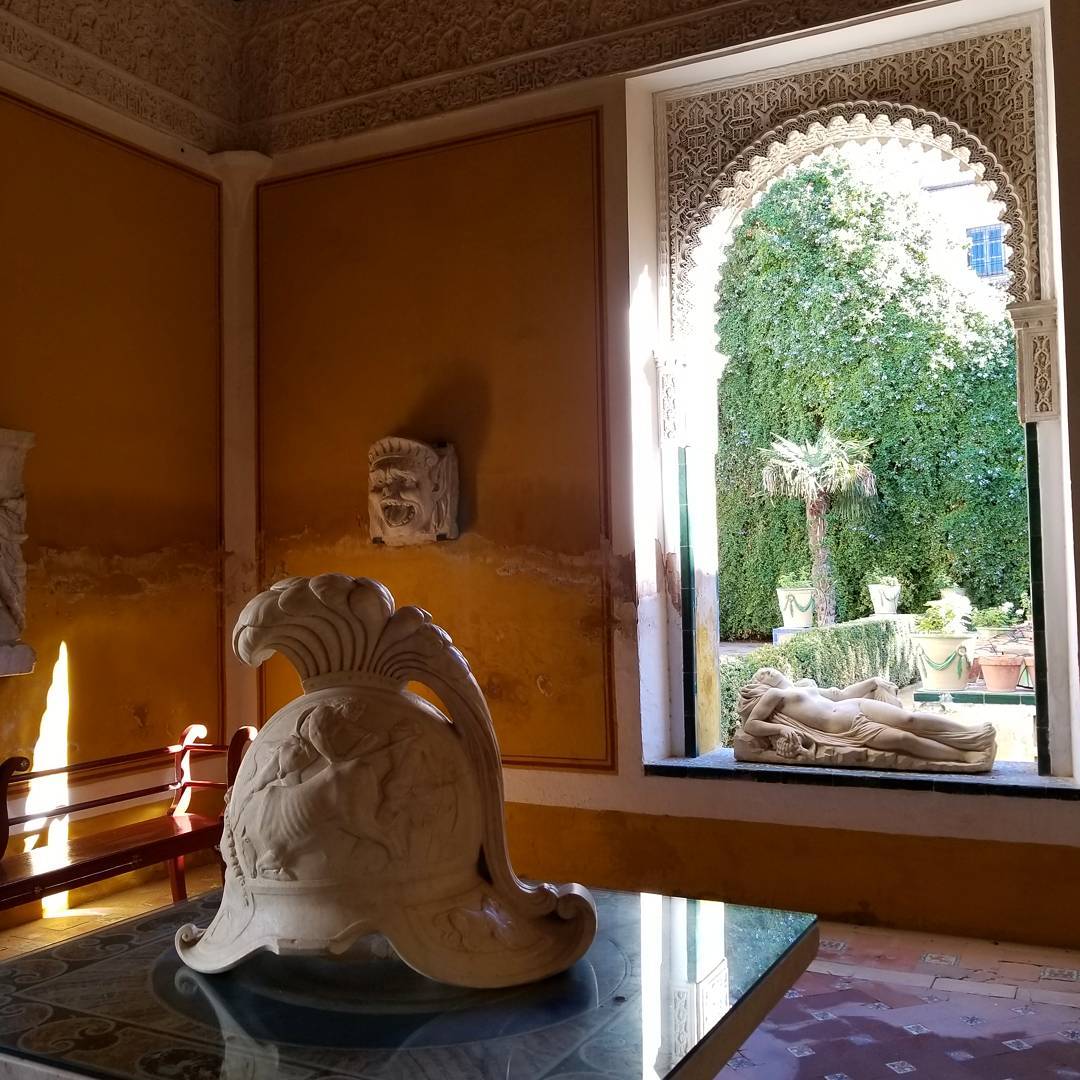
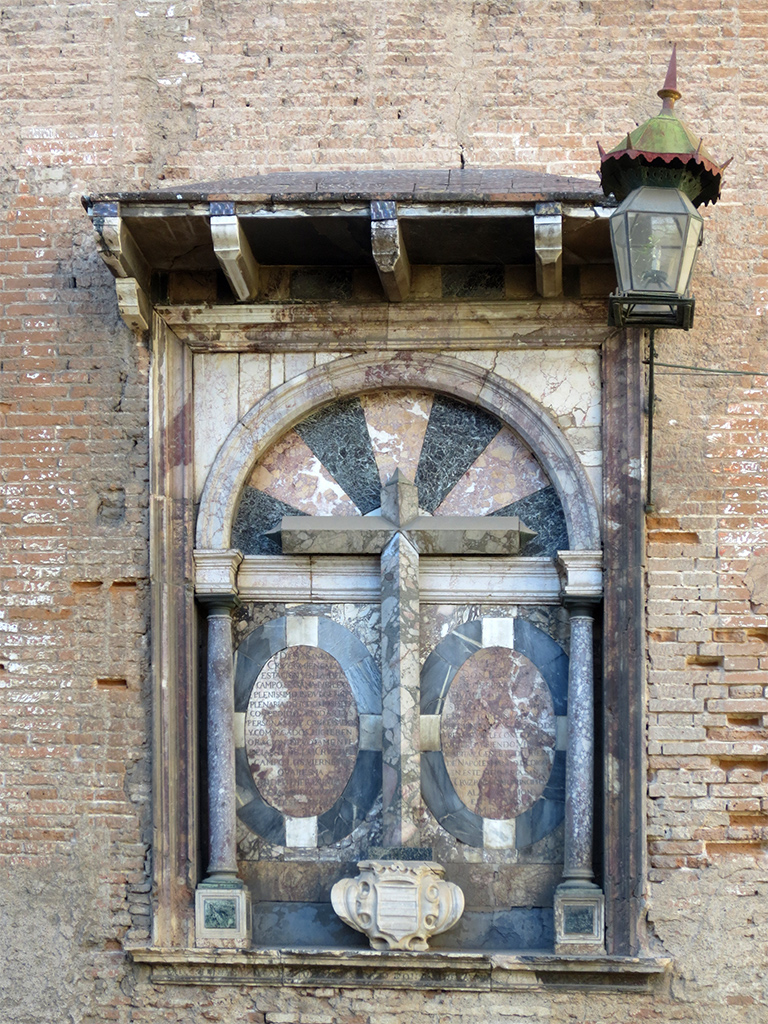
Much like the Palacio de las Dueñas we visited a few weeks ago, the palace was peaceful and a little off the main tourist circuit. It helps that we were visiting in low season, even though the gardens may not be at in peak form. Lack of crowds gave us lots of time to wander and take photographs with only a few other visitors doing the same.
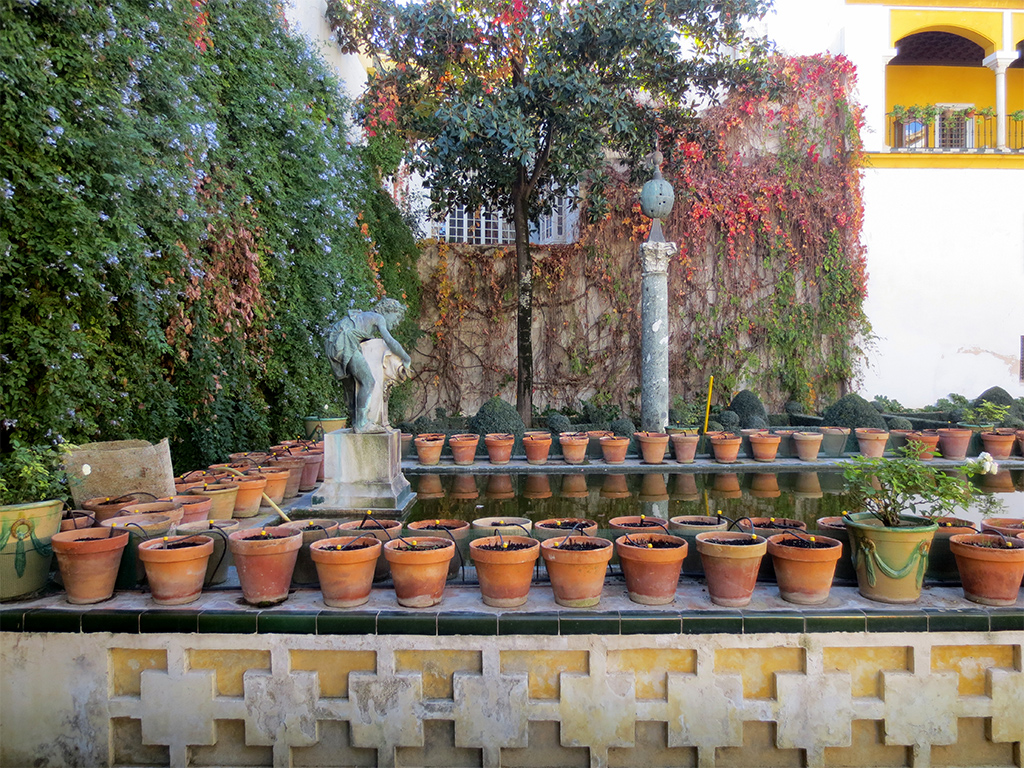
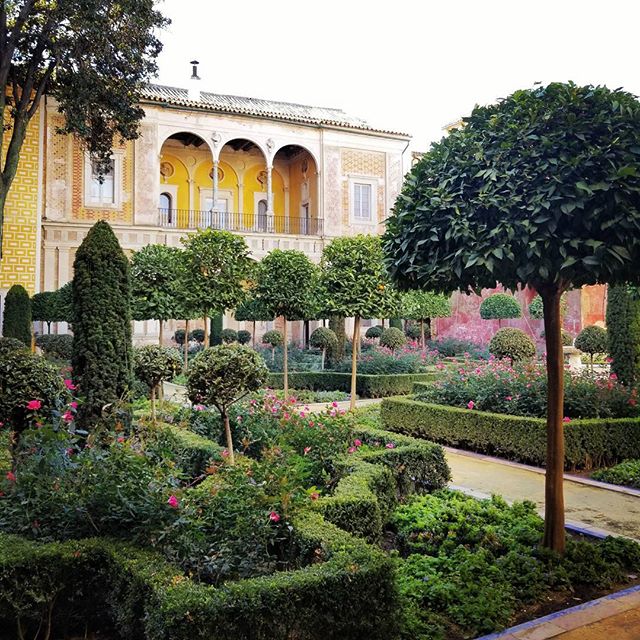
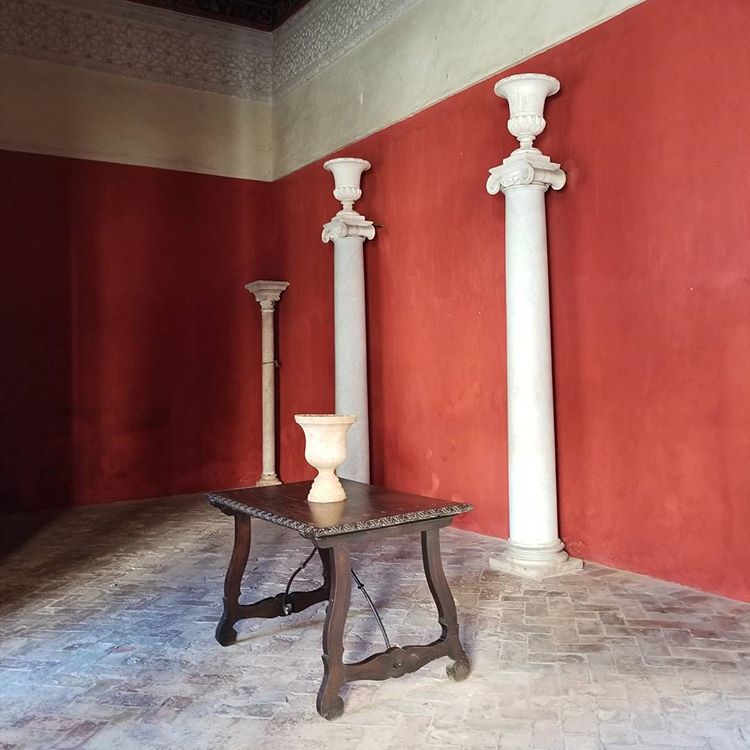
No matter how many arches we see, we never tire of the way they naturally frame the scenes beyond them. Perhaps that’s why the architects seemed to like building so many.
